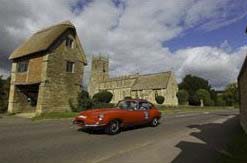Jaguar - A Short History

The Central Bowling Club in Bloomfield Road, Blackpool, hardly seems the most relevant place to begin tracing the history of Jaguar cars. It's seen better times, the lanes looking as if they could use some oil and the scoring screens at least a generation out of date. Wind the clock back to 1922 and it was on a premises now occupied by the bowling club that Bill Lyons and William Walmsley set up shop, building motorcycle sidecars and attaching them to reconditioned bikes. Business was good, and although Lyons was just 21 years old, a team of eight employees was never allowed to idle.
As the business thrived, larger and larger premises were required and the Swallow Sidecar Company began to occupy successively bigger industrial units around Blackpool. The nature of the work changed too and, by 1927, the company was renamed the Swallow Sidecar and Coachbuilding Company, taking the popular Austin Seven and rebodying it to create the Austin Seven Swallow, a roadster that retailed for the princely sum of £175.
Sourcing the skilled labour to produce this sort of work proved tough for Lyons and Walmsley and, in 1928, the business moved from Blackpool to a disused ammunition plant in Foleshill, Coventry. A huge order from Henlys for 500 Austin Swallows prompted the move, as the old Blackpool plant could only manage an output of two cars a day. Capacity increased to 50 cars a week and costs were slashed, as there was now no need to transport the bare chassis from the Midlands plants all the way up to Blackpool.
Lyons welcomed the bulging order books but remained dissatisfied with a mere coachbuilding role. The first steps to becoming a fully fledged car manufacturer were taken when Lyons commissioned the Standard Motor Company to build a chassis to Swallow's design, but fitted with Standard engines. The S.S.1 coupe debuted at the 1931 London Motor Show, and with its low, sleek lines it gave an early glimpse of what would later be recognised as a Jaguar shape. Retailing for just £310, it also proved a commercial hit and spawned the subsequent S.S 90 and SS100 models.
The Second World War inevitably put the evolution of the nascent Jaguar brand on hold while the Foleshill factory was pressed into service making three types of trailers, as well as various aircraft ancillaries for planes such as the Spitfire, the Lancaster and the Mosquito. By the end of the conflict, Foleshill was building entire Gloster Meteor fuselages. The war also spelt the end of the SS model designation which, by 1945, had picked up some rather unsavoury connotations.